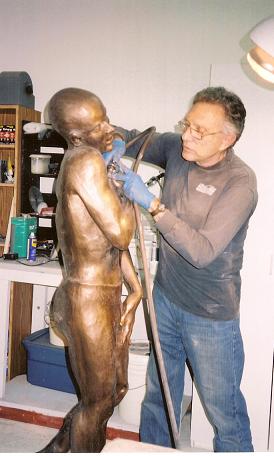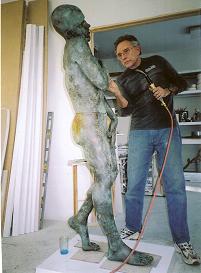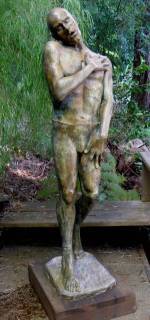 |
Adam
and Eve Statement
For over a millennium, thousands of artists,
including Rodin and Michelangelo, have portrayed the story of the Garden of
Eden with images of Eve being seduced with an apple from the Tree of
Knowledge and then corrupting Adam. Many of the depictions show the guilt,
shame, and remorse of their expulsion. The usual themes consist of
temptation, transgression, and punishment.
However, the Loss of Paradise with an
emphasis on grief and the accompanying longing to reclaim the blissful state
of Eden, would be another possible interpretation of the Biblical metaphor.
I've tried to present Adam and Eve through the prism of the latter and
rarely depicted emphasis. Here's why. At times in our lives, not all but
most of us tend to experience a persistent if fluid craving; a longing that
is intermittent but chronic in nature, that often shifts its focus and is
occasionally satisfied but in a way that can rarely be sustained.
|
|
|
 |
The existentialists believed this enduring
angst to be at the core of Being. Eric From saw the universal angst in
terms of Human Evolution; that with consciousness came the loss of being in
unconscious harmony with nature. As a psychologist, I believe this longing
also comes from our own personal "expulsion from paradise", from our own
loss, as infants, of that merged state when there was no separation between
us and the secure embrace of a mother's arms; no separation from her breast
and the feel of her skin, from her warmth and smell and voice. Once, we were
in a kind of Eden, "at one with all the world", and it was bliss. Then the
at-oneness was lost and the longing followed. |
|
|
 |
Whatever its origins, there are an infinite
variety of ways in which we try to recapture some essence of Eden. The
pursuit of wealth, fame, and other forms of victory, or the use of alcohol,
sex, music, and drugs; all these can temporarily give us an intimation of
the original, blissful state. In a more sustainable way, so can a strong
identification with community, a spiritual practice, or having a partner who
loves and accepts you. But the underlying pull almost always reasserts
itself. |
|
|

